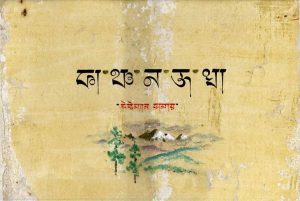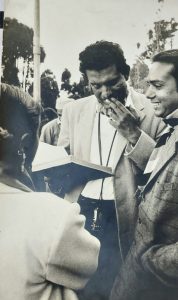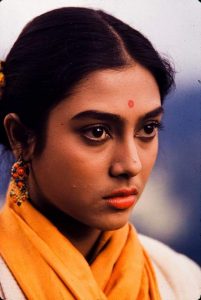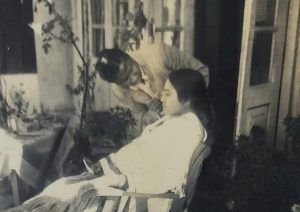It is that time of the year again. The peak of summer in Gangetic Bengal. With the mercury soaring diligently towards the 40 degree centigrade mark and the humidity constantly on the rise, there is no respite from the sweltering heat. In a day or two, all the schools – government or private – will close for the summer recess. A situation tailormade for a visit to the Darjeeling hills.
But the present Covid-19 situation is so grim in the state of West Bengal that one cannot move an inch! We are into the third week of May 2021, and the deadly virus is all over us. Although the term ‘lockdown’ was not spelt out, life has come to a standstill. And heaven o heaven, good old Darjeeling is currently reeling under the pressure. Last heard, the Darjeeling district hospital – the biggest in the district – is treating the Covid-19 patients, but without a single ventilator! Since the hill people are getting down to the plains to get themselves treated, would anyone from the plains dare check in to any Darjeeling hotel now? Even the incorrigible romantics and the honeymooners would say, “No!”
But one need not feel heartbroken. We can take a fresh look at our relationship with the hill town instead. Picking up the photo albums tucked in obscure corners of the house might bring back memories of several generations negotiating with the winding paths and the sailing cloudlets. Those toy train joyrides. That therapeutic state of mind emanating from a suddenly acquired ability to relate to the vastness of nature. Those days and nights strolling down the mall, and then waking up to the brilliant radiance of the morning sunlight reflected on the tip of Kanchenjunga. We Bengalis have preserved them like the gems in safe custody. It helps – nonetheless – to connect our pragmatic self with the romantic one, our own generation with the ones bygone.

The other day I happened to pick up my copy of Sheete Upekkhita, a unique travelogue-cum-autobiographical narrative by Ranjan alias Niranjan Majumder. The gripping prose and the philosophical look the author took at our Darjeeling rendezvous down the years remain fresh even after 70 years of its publication. Ranjan’s clairvoyance appears most amazing. He was spot on when he smelt an increasing distance between the people of the hills and the tourists from the plains. But then, Sheete Upekkhita is a connoisseur’s delight and presently out of print.
Thus we are left with Kanchenjunga, the 1962 Satyajit Ray film that seems to be growing on us every passing generation. My maternal grandfather – who would have been 101 this summer – found it the best that Satyajit produced. There are a few others of his generation who rated Kanchenjunga highly – higher than the esteemed trilogy or Charulata, Satyajit’s own favourite, for that matter. With Satyajit Ray’s birth centenary bringing back some moments of jubilation in our otherwise jilted mortal existence, let us take a closer look at certain aspects of Kanchenjunga that we normally overlook.

You all know that Kanchenjunga was the first original script penned by Satyajit. It was his idea – entirely. It was set in real time, a departure that prompted Ritwik Ghatak quip, “The Rip Van Winkle seems to have a woken up!” And most importantly, it was shot in Eastmancolor – a cutting edge technology only made available sparsely in those days. It was a luxury. Given the logistics of Bengali film industry, it was no less than tightrope walking made all the more difficult by the film’s strict adherence to temporal continuity. Remember, Mughal-e-Azam released in 1960 was shot almost entirely in black and white and Guru Dutt could shoot only the ‘Chaudhvin Ka Chand’ song in colour for his 1960 release. When Satyajit was wrapping up his 26-day-schedule at Darjeeling, the Shammi Kapoor-starrer Professor was also being shot at Darjeeling. As they ran out of film stock, it was Satyajit who saved their day. Such was the rigour that a film like Kanchenjunga demanded from him and he achieved it in style.
There are other lesser known nuggets.
Firstly, Kanchenjunga was not originally set in the hills. Satyajit originally located this in a picnic spot in the outskirts of Calcutta and named it Baganbari, i.e. a country house. It was only after a series of recce in the northern fringes of Calcutta failed that he – in a moment of epiphany – decided to relocate it to Darjeeling. Whereas the characters and the conflict lines remained unaltered in the reworked script, the hills and the gorgeous Kanchenjunga were value addition.
Secondly, the film bombed at the box office. It simply tanked. Released in the Rupbani-Aruna-Bharati chain on 11 May 1962, the film enjoyed a very indifferent run. The critical response was frustrating. While many – including his Calcutta Film Society mates – ignored it; P.Lal – an eminent English professor from St. Xavier’s College – rubbished it as ‘Anti-Film’ and criticised it for crafting ‘picture-postcard’ relationships. Satyajit was equally disappointed. In his later interviews he often claimed that Kanchenjunga was 10-15 years ahead of its time. According to Satyajit, the audience could not relate to the ‘fragmented narrative structure’ involving a ‘group of characters’ and lacking a ‘central character’. Speaking on the film twenty years after the release, he could not hide his disappointment. In a Cineaste interview, he described the audience response to Kanchenjunga was ‘like stupid’. He never used such loaded words to describe his audience – the immediate audience that he catered to.

Interestingly, Satyajit always placed Kanchenjunga among his favourites; in the second rung after Charulata, Aranyer Dinratri and Joy Baba Felunath. ‘It was an enjoyable film,’ he maintained throughout. He also referred to it as ‘a very personal film’. Thereby he exposed his Achilles’ heel. Kanchenjunga was, understandably, the most personal film he ever made.
Why is it so, pray?
Satyajit never divulged it. Bijoya Ray’s otherwise candid autobiography mentions every 1962 event in full detail. Curiously enough, she did not even mention the release of Kanchenjunga and the lukewarm response it generated.
We can, however, presume a few personal attributes. Not only was the film set in 1962 itself, Satyajit drew all the characters from his own experience. They were living characters for him. While it would be improper to point out who was based on whom, and such associations can only lead to gross generalizations, negating the film’s intent; let this be said that Satyajit laid bare his soul in depicting the agony and ecstasy in Kanchenjunga. It was his critique of his own time, own people – ‘the Anglo-Bengali middle class’ that he belonged to; in one word – his own existence.
Interestingly, Satyajit always placed Kanchenjunga among his favourites; in the second rung after Charulata, Aranyer Dinratri and Joy Baba Felunath. ‘It was an enjoyable film,’ he maintained throughout. He also referred to it as ‘a very personal film’.
His grandfather Upendrakishore was in love with Darjeeling, so was his father Sukumar. Both wrote on Darjeeling. In fact, Upendrakishore’s painting on Kanchenjunga seen from Darjeeling was a precious possession of the Ray family after they moved out of their Garpar mansion. In Jakhan Chhoto Chhilam, his childhood memoirs, Satyajit narrated his first visit to Darjeeling in full detail. He was only seven then, and was accompanied by his mother Suprova who was waiting for her first appointment. But three of Suprova’s sisters had their personal residence in Darjeeling at that point and Satyajit stayed with all three. One among them had a residence named Elgin Villa, complete with a tennis court chiselled out of the hills. There were other acquaintances whom Satyajit did not mention. By the time he arrived to film Kanchenjunga, Darjeeling was a second home for him. He frequented his cousin brother Dilip Ray – a jockey at the Labong race course and a film enthusiast whom Satyajit relied upon.
In 1960, a year before Kanchenjunga was shot; Satyajit guided Bijoya and son Sandip to Darjeeling. Bijoya recalled how ecstatic Satyajit was when he recalled the pristine beauty of the first ray of light caressing the tip of the mountain. In fact, the sequence where Karuna Bandyopadhyay sings ‘E parabase rabe ke’ – lip syncing to Amiya Tagore’s enthralling singing – was shot at the particular viewpoint where Kanchenjunga looks the most radiant.
In Kanchenjunga, Satyajit made a retrospective survey of the changing colours of Darjeeling hills in his own way. He had his own estimate of Darjeeling lovers – the pleasure seekers, the bird watchers, the Sanatorium dwellers, and of course the natural inhabitants who were represented by a beggar boy in the film. Satyajit knew the repercussions of 1947 on the Darjeeling hills. The West Bengal Estates Acquisition Act was implemented in 1953, leading to the abolition of the zamindari system that held the Bengali society together for centuries. It also marked the gradual decline of civil servants from their supreme colonial heights.
Both told upon the fortunes of Darjeeling. Indra Narayan Chowdhury, the patriarch played exquisitely by Chhabi Biswas, looked every bit a fossil caught in a time warp. Although a corporate leader, he was a misfit in a land which was writing a new history of struggle for independence, and witnessing the rise of a new middle class. Darjeeling – with its Scottish cottages and boarding schools – was a safe haven for that particular section of people. That his family stayed put at Windermere Hotel, among the luxury properties that holds good till date, clearly demonstrated their economic clout. Satyajit did not belong to this class, but knew them from close quarters. That the patriarch’s elder daughter was trapped in a loveless marriage and her husband was considering a divorce was sketched with an eye to the Hindu Marriage Act 1955 that legalised divorce. Her sister Manisha, the film’s narrative fulcrum, represents the new woman emerging out of shadows.
Satyajit’s sympathy for the unemployed young man who eventually rejects the patriarch’s job offer is so evident that the Communists could have claimed him as their own. They never did, but Satyajit’s class position finds itself in the most problematic crossroads in Kanchenjunga. Coming after Jalsaghar, the film reflects the zeitgeist in clear terms.

Why did most of the audience reject it?
We have two explanations. One, it was so rooted in 1962 West Bengal, that people from other parts of India, forget the British and the Americans, found it hard to relate. In a 1912 letter from England, Sukumar compared Darjeeling to Bournemouth. All that romance and dream attached to Darjeeling was put through a thorough scrutiny in Kanchenjunga, leading to the ‘stupid’ response. Two, it was so penetrating in its criticism of the affluent part of Bengali society – Satyajit’s own audience – that most of them were caught unawares. Furthermore, such an anglicised way of Bengali life was rarely portrayed in Bengali cinema of its time. The new audience did not find it interesting.
Thus, Kanchenjunga fell headlong into a gorge.
That it recovered, and keeps renewing itself owes a lot to hill region movements over the last four decades, and our sense of detachment from Darjeeling in the recent years.
Yet, we will take more time to see Kanchenjunga with open eyes. The cloud cover may not hover so heavily like in 1962, but it is still there. Our recent engagement with Bengali identity politics and total displacement of Bengali bhadralok from the positions of power will come handy.
Images courtesy: Abhijit Sen
Anshuman Bhowmick is a cultural commentator based in Calcutta aka Kolkata. Among many other things, he reviews theatre for a leading English daily and a prominent Bengali periodical and represents Bengali theatre in national and international forums. A widely travelled man equally at home in West Bengal and Bangladesh, Anshuman is curious about everything related to Bengal - past, present and future.








One Response
When the original stills are in my possession, how did Abhijit Sen get them I wonder.